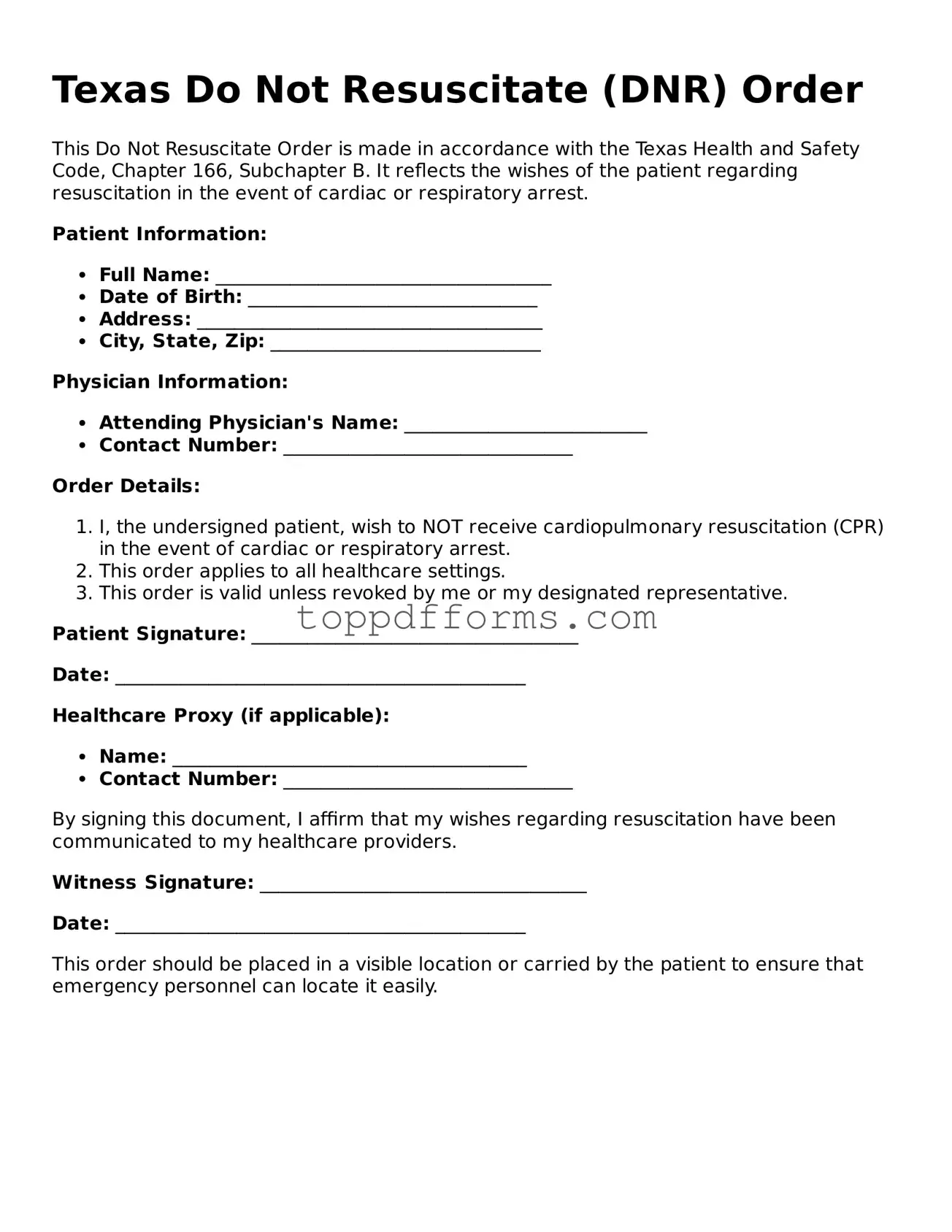What is a Texas Do Not Resuscitate Order (DNR) form?
A Texas Do Not Resuscitate Order (DNR) form is a legal document that allows a person to refuse cardiopulmonary resuscitation (CPR) and other life-sustaining treatments in the event of a medical emergency. This form is typically used by individuals with terminal illnesses or those who wish to avoid aggressive medical interventions at the end of life. The DNR order must be signed by a physician and the patient or their legally authorized representative to be valid.
Who can complete a DNR form in Texas?
In Texas, any adult who is capable of making their own medical decisions can complete a DNR form. Additionally, a legally authorized representative, such as a family member or guardian, may sign the form on behalf of an individual who is unable to do so due to medical reasons. It is essential that the person completing the form understands the implications of the DNR order.
How does a DNR order work in a medical setting?
When a DNR order is in place, medical personnel are required to respect the wishes of the patient regarding resuscitation efforts. If a patient experiences cardiac arrest or stops breathing, the DNR order instructs healthcare providers not to perform CPR or other resuscitation techniques. The DNR order must be readily accessible to medical staff, often kept in the patient’s medical records or displayed prominently in the patient's room.
Can a DNR order be revoked or changed?
Yes, a DNR order can be revoked or changed at any time by the patient or their legally authorized representative. To do so, the individual should inform their healthcare provider and complete a new DNR form if necessary. It is advisable to communicate any changes to family members and ensure that the most current version of the DNR order is available to medical staff.
Is a DNR order the same as a living will?
No, a DNR order and a living will are not the same. A DNR order specifically addresses the refusal of resuscitation efforts in the event of cardiac arrest. In contrast, a living will is a broader document that outlines a person's wishes regarding medical treatment and end-of-life care in various situations, including life support and other medical interventions. Both documents are important for ensuring that an individual's healthcare preferences are honored.
Where can I obtain a Texas DNR form?
A Texas DNR form can be obtained from various sources, including healthcare providers, hospitals, and online resources. The Texas Department of State Health Services also provides access to the official DNR form. It is important to ensure that the form is completed correctly and signed by a physician to ensure its validity.
